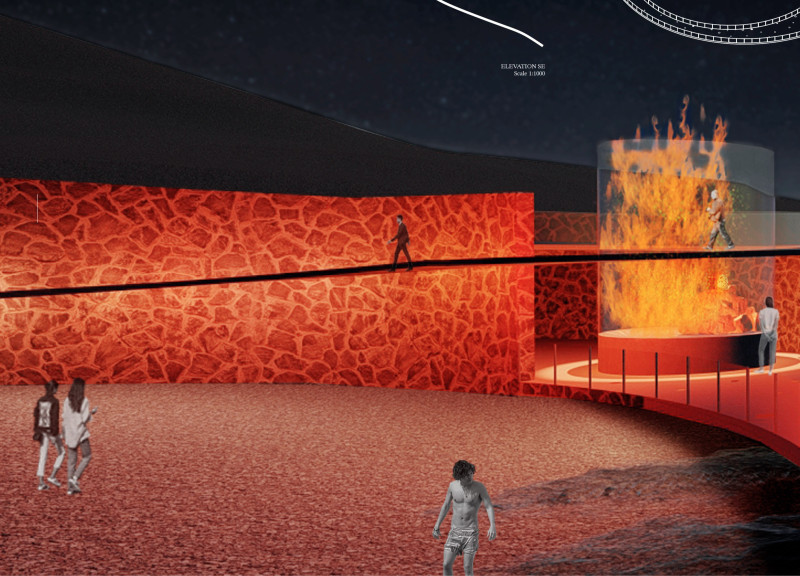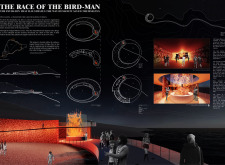5 key facts about this project
The Race of the Bird-Man serves as a pavilion that illustrates the theme of cultural reinvention. Located within the archaeological tourist route of Rapa Nui, the pavilion draws on the island’s rich history while presenting the narrative of the Tangata Manu race. In this event, competitors swam to Moto Nui with the goal of retrieving the sacred egg of the Manu Tara. The design captures this storied past and aims to connect visitors to the cultural significance embedded in the island’s traditions.
Spatial Organization
The layout is carefully crafted to guide visitors on an engaging journey reflective of the Bird-Man competition. Pathways and exhibition areas are arranged in a way that encourages exploration and interaction. This thoughtful organization helps visitors connect with both the space and the stories it holds, enriching their experience with the pavilion.
Integration with Landscape
The pavilion's design seeks to create a connection to the natural landscape of Rapa Nui. By allowing the structure to blend with its environment, it highlights a sense of respect for the island’s ecology and culture. This integration fosters an appreciation for the heritage of Rapa Nui while providing an architectural experience that resonates with its geographical context.
Symbolic Elements
Throughout the pavilion, key aspects of the Bird-Man race are represented through various symbolic elements. The sacred egg, along with the idea of "Mana," is interwoven into the design. These symbols add depth to the narrative of the space, emphasizing its cultural importance. As visitors navigate through these details, they gain insights into the significance of the traditions associated with the architecture.
The design suggests a sense of movement that echoes the challenge faced by the Bird-Man competitors. This fluidity invites interaction, encouraging visitors to engage with the space and its cultural context. The pavilion ultimately honors Rapa Nui’s legacy while offering a meaningful experience shaped by the stories it tells.



















































